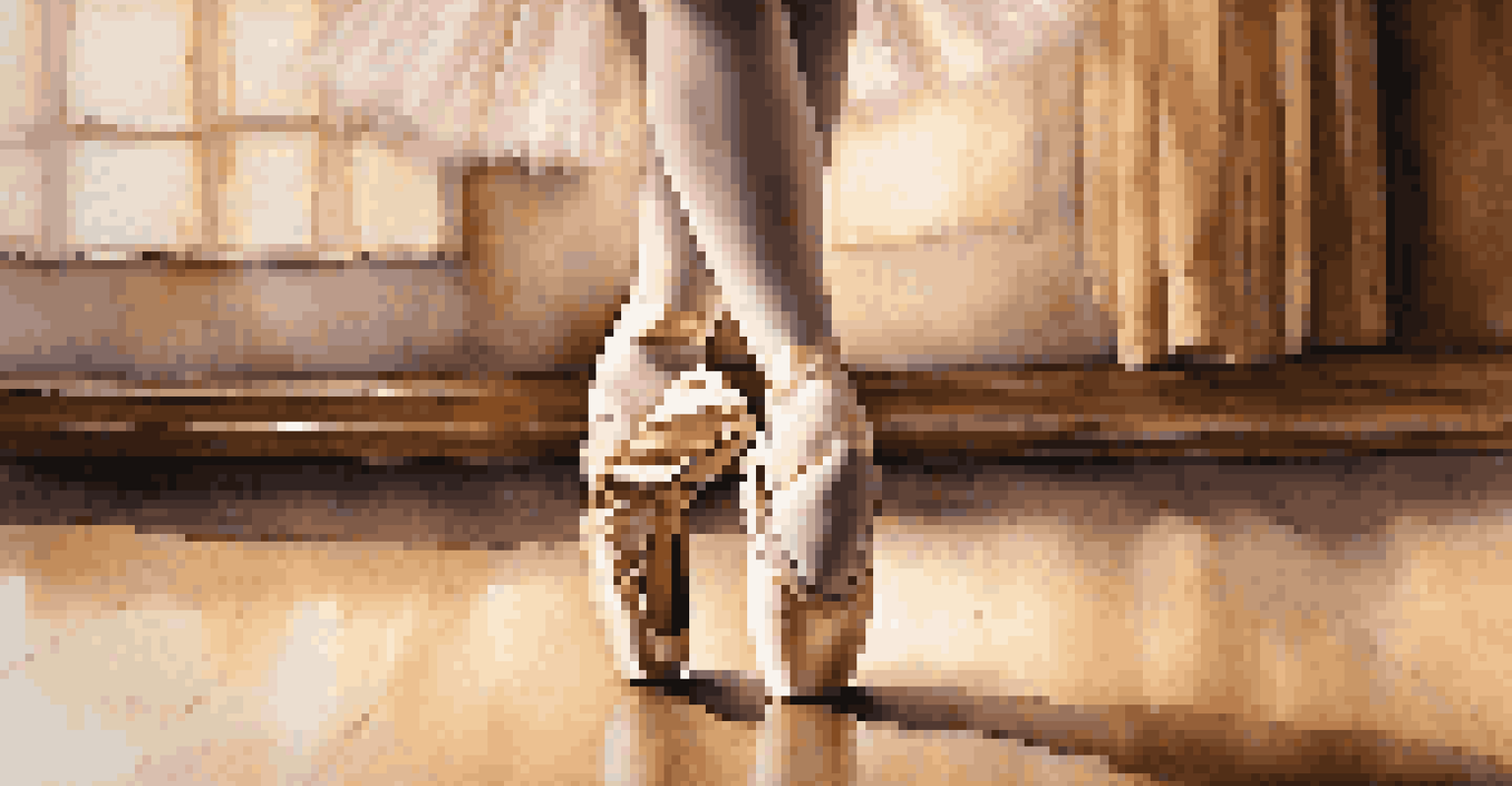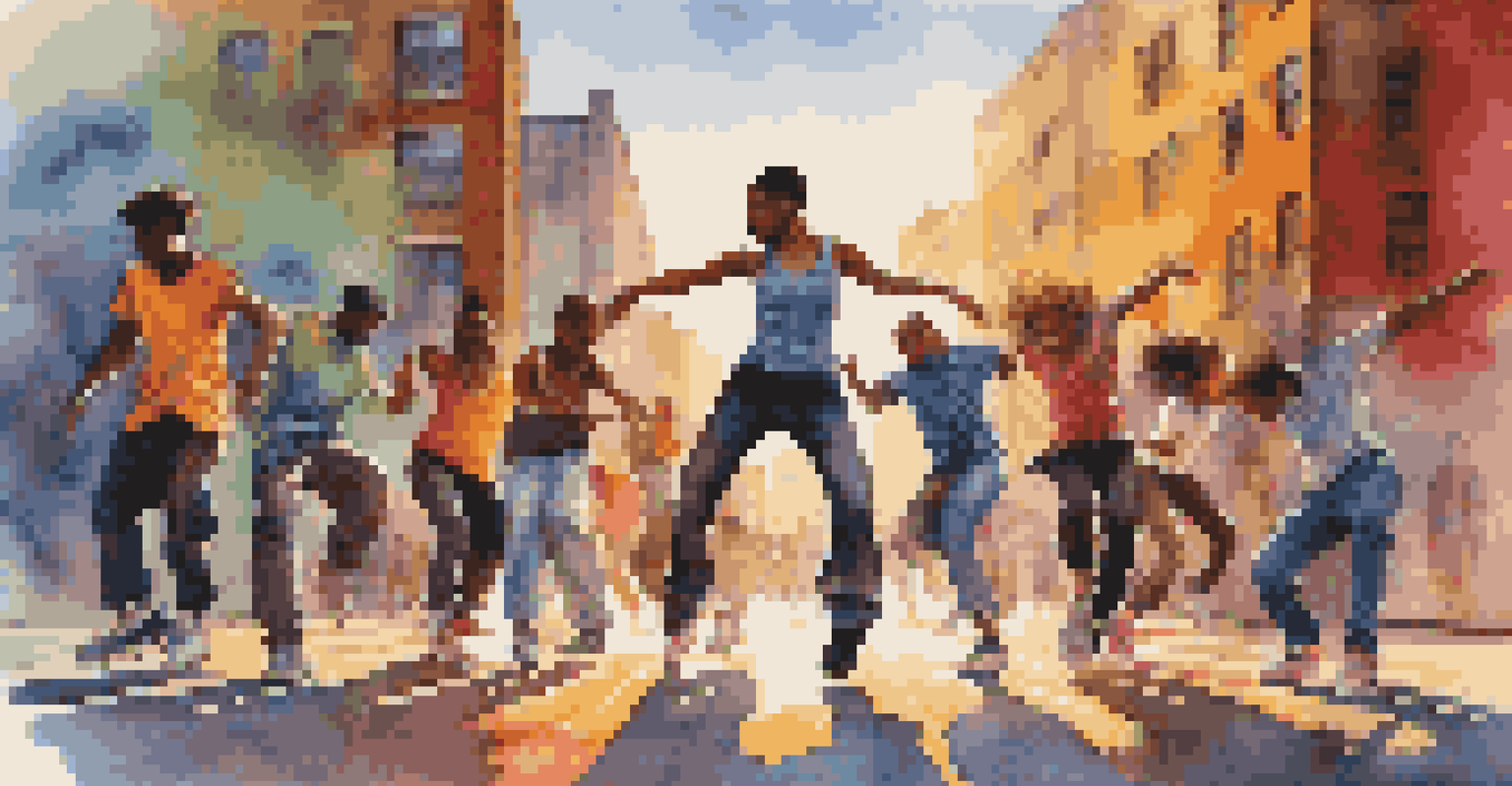The Role of Dance in Youth Identity Formation and Gender

Understanding Youth Identity Formation Through Dance
Dance serves as a powerful medium for self-expression, especially in youth. As young people engage in dance, they often explore their feelings, thoughts, and personal narratives. This creative outlet fosters a sense of belonging and helps them form a unique identity in a world that often demands conformity.
Dance is the hidden language of the soul.
For many, dance is a safe space where they can experiment with different aspects of who they are. Whether it’s through hip-hop, ballet, or contemporary styles, each genre offers a distinct way of expressing individuality. This exploration is crucial during formative years, as it allows youth to navigate their personal and social landscapes.
Moreover, the communal aspect of dance, whether in classes or performances, enhances connections with peers. These interactions not only solidify friendships but also help shape self-perception and social identity, making dance an integral part of youth development.
The Intersection of Dance and Gender Expression
Dance provides a unique lens through which young people can explore and express their gender identities. From traditional dance forms to modern interpretations, each style can challenge or reinforce societal norms surrounding gender. This flexibility is vital for youth as they seek to understand their own identities.

For instance, boys may find themselves drawn to styles like ballet, which can defy stereotypes about masculinity. Similarly, girls might engage in breakdancing, pushing back against conventional gender roles. Dance thus becomes a playground for challenging societal expectations and embracing a broader spectrum of gender expression.
Dance Fosters Youth Identity Growth
Through dance, young people explore self-expression and develop their unique identities in a supportive environment.
Additionally, dance communities often serve as supportive environments where youth can express themselves without judgment. This nurturing atmosphere encourages individuals to embrace their true selves, fostering a sense of empowerment and confidence in their gender identities.
Cultural Influence on Dance and Identity Formation
Cultural backgrounds significantly shape the way youth engage with dance and express their identities. Various dance forms carry distinct cultural narratives, allowing young people to connect with their heritage while also navigating their personal identities. This connection can be particularly empowering for those from marginalized backgrounds.
Dancing is creating a sculpture that is visible only for a moment.
For example, traditional dances often tell stories of ancestry and community values, helping youth feel rooted in their culture. At the same time, contemporary influences can introduce new ideas and practices that promote innovation and individuality. This blend of tradition and modernity is crucial in forming a well-rounded identity.
Furthermore, as youth participate in diverse dance styles, they cultivate an appreciation for different cultures, fostering inclusivity and understanding. This cultural exchange not only enriches their personal journey but also contributes to a more harmonious society.
Dance as a Tool for Social Change and Awareness
Dance is not just an art form; it can also be a powerful vehicle for social change. Many youth use dance to raise awareness about pressing issues such as gender inequality, mental health, and social justice. By incorporating these themes into their performances, they spark conversations and inspire action within their communities.
Through collective dance projects and performances, young dancers can unite to address societal challenges. These initiatives often encourage collaboration and teamwork, fostering a sense of purpose and shared responsibility among participants. In this way, dance becomes a platform for advocacy and empowerment.
Dance Challenges Gender Norms
Dance serves as a platform for youth to experiment with and embrace diverse gender expressions, breaking societal stereotypes.
Moreover, as youth express their views through dance, they inspire others to reflect on their beliefs and values. This ripple effect can lead to a broader understanding of issues and motivate individuals to become more engaged citizens.
The Role of Technology in Dance and Identity
In today’s digital age, technology plays a crucial role in shaping how youth experience dance and identity. Social media platforms allow young dancers to showcase their talents and connect with like-minded individuals globally. This exposure not only boosts their confidence but also broadens their understanding of different dance cultures.
Moreover, online dance tutorials and challenges have democratized access to dance education. Youth can learn various styles from the comfort of their homes, enabling them to explore their interests without the constraints of location or resources. This accessibility can be particularly empowering for those who may not have traditional dance training.
However, it's important to recognize the potential downsides of technology, such as the pressure to conform to social media standards. Young dancers may feel compelled to fit a certain mold, which can impact their self-esteem and identity. Navigating this landscape requires balance and self-awareness.
The Importance of Inclusivity in Dance Communities
Inclusivity within dance communities is essential for fostering a positive environment where all youth can thrive. This means creating spaces where individuals of all backgrounds, abilities, and identities feel welcomed and valued. Such an inclusive atmosphere encourages diverse expression and enriches the overall dance experience.
Dance studios and organizations that prioritize inclusivity often see a vibrant mix of participants. This diversity not only enhances creativity but also promotes understanding and respect among dancers. When youth witness varied representations of identity within their dance communities, they are more likely to accept their own uniqueness.
Cultural Heritage Shapes Dance Identity
Cultural backgrounds influence how youth engage with dance, allowing them to connect with their heritage while forming personal identities.
Furthermore, inclusive practices can lead to mentorship opportunities, where experienced dancers support newcomers in their journeys. These relationships can be transformative, helping young people build confidence and a sense of belonging while exploring their identities through dance.
Conclusion: Embracing Dance for Personal and Social Growth
In summary, dance plays a multifaceted role in youth identity formation and gender expression. It provides a platform for self-discovery, cultural connection, and social engagement. As young people navigate their identities, dance offers a unique blend of creativity and community that can significantly impact their development.
Moreover, the evolving landscape of dance, shaped by technology and cultural influences, continues to offer new opportunities for exploration and expression. By embracing these changes, youth can further enrich their understanding of themselves and the world around them.

Ultimately, encouraging young people to engage with dance not only supports their personal growth but also fosters a more inclusive and aware society. As they dance through life, they weave together their stories, identities, and dreams.